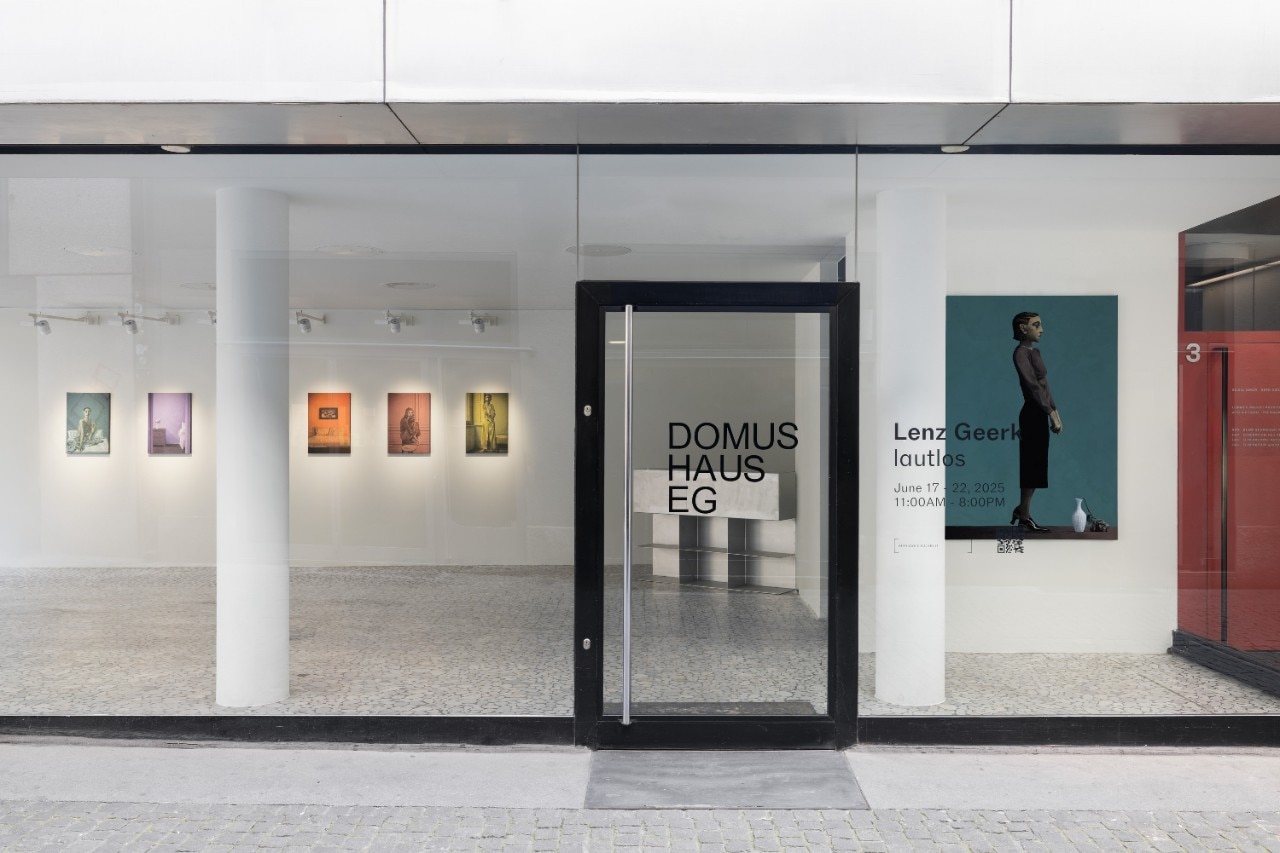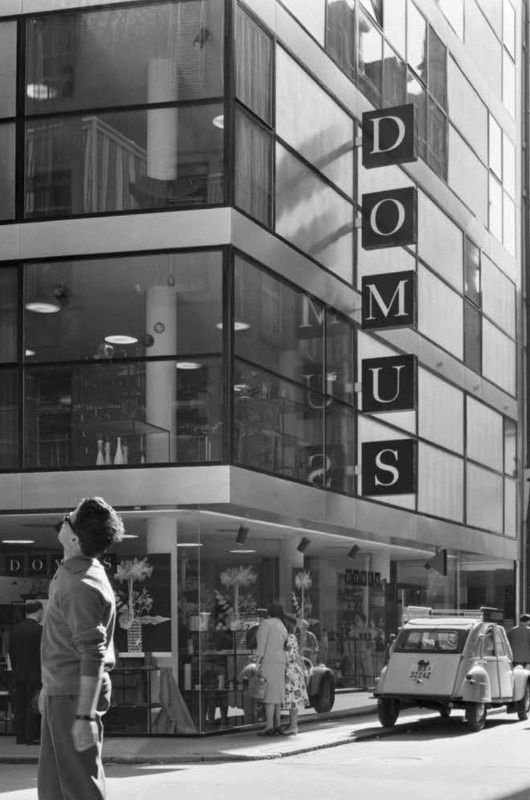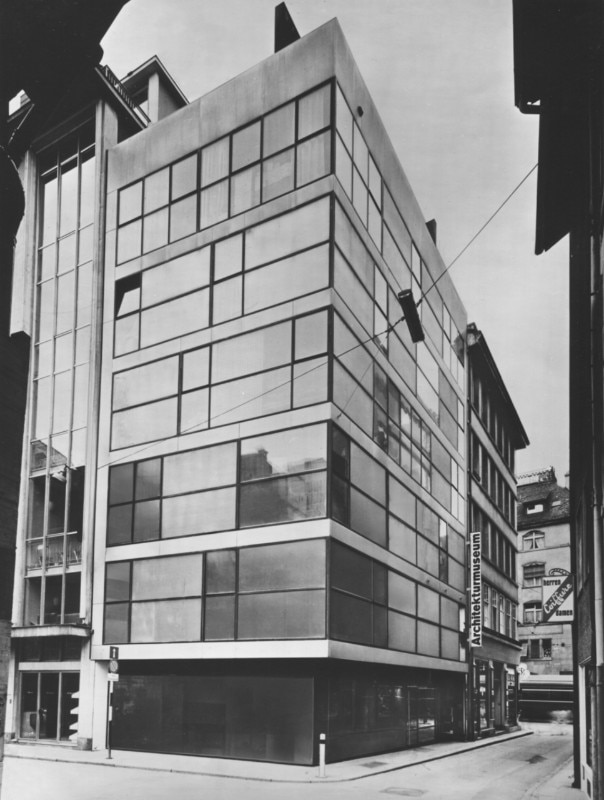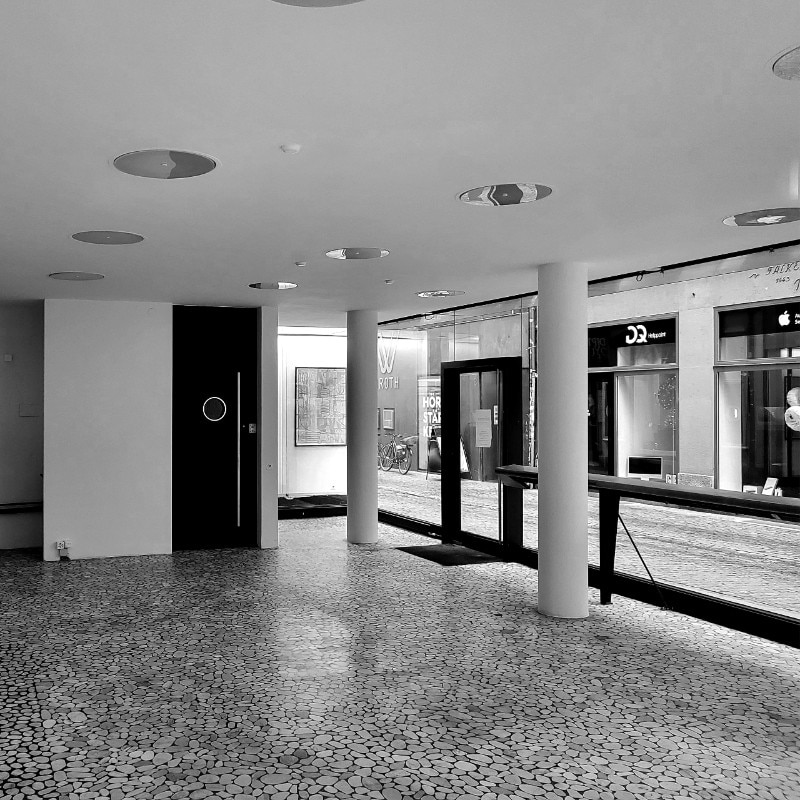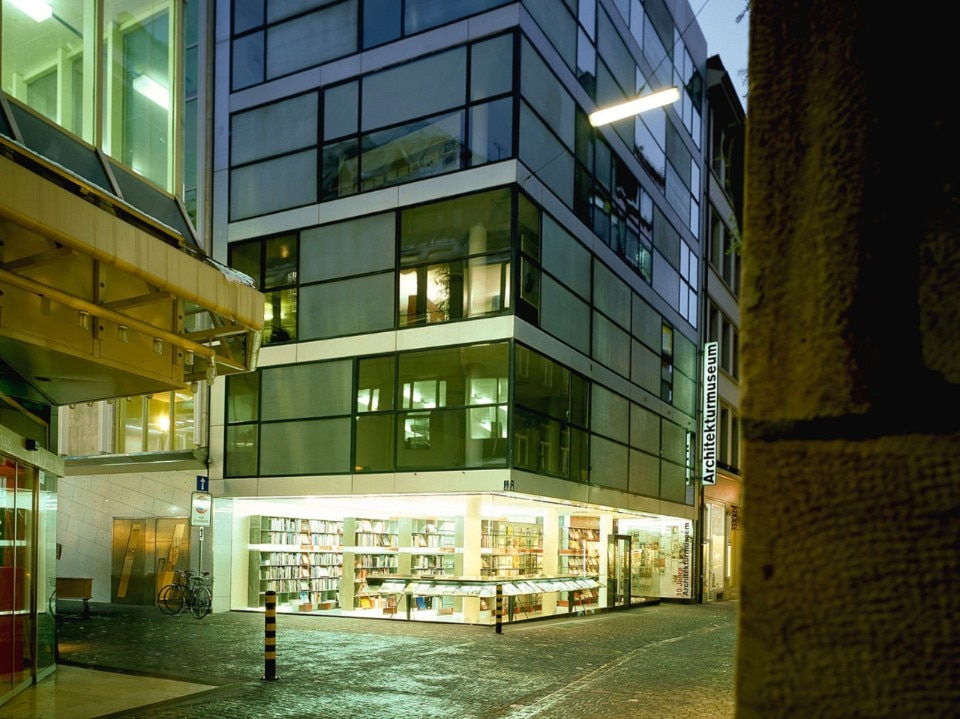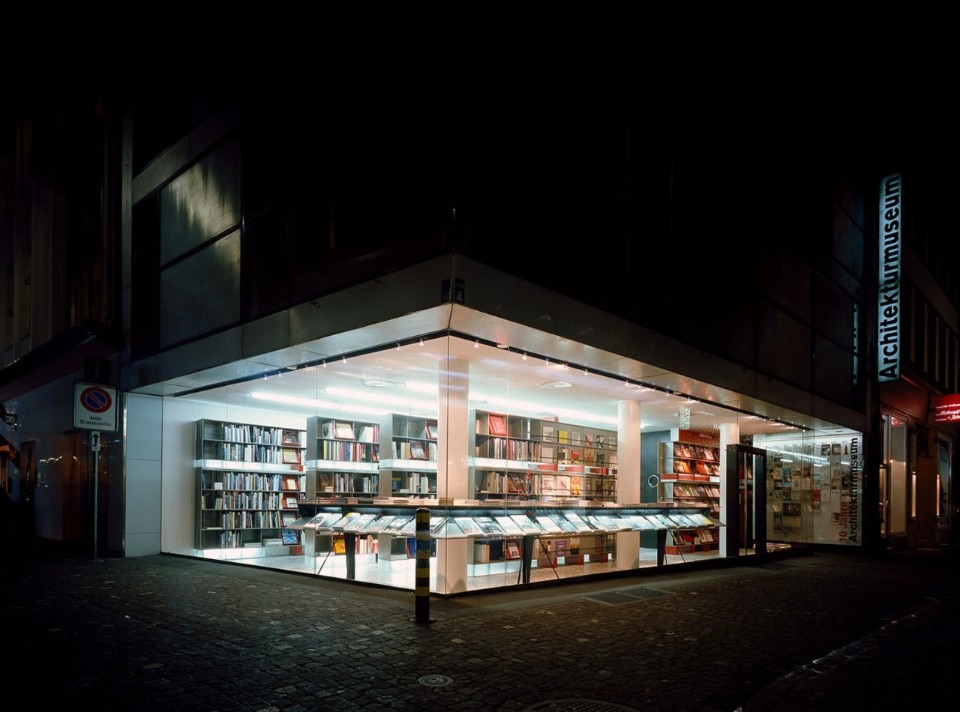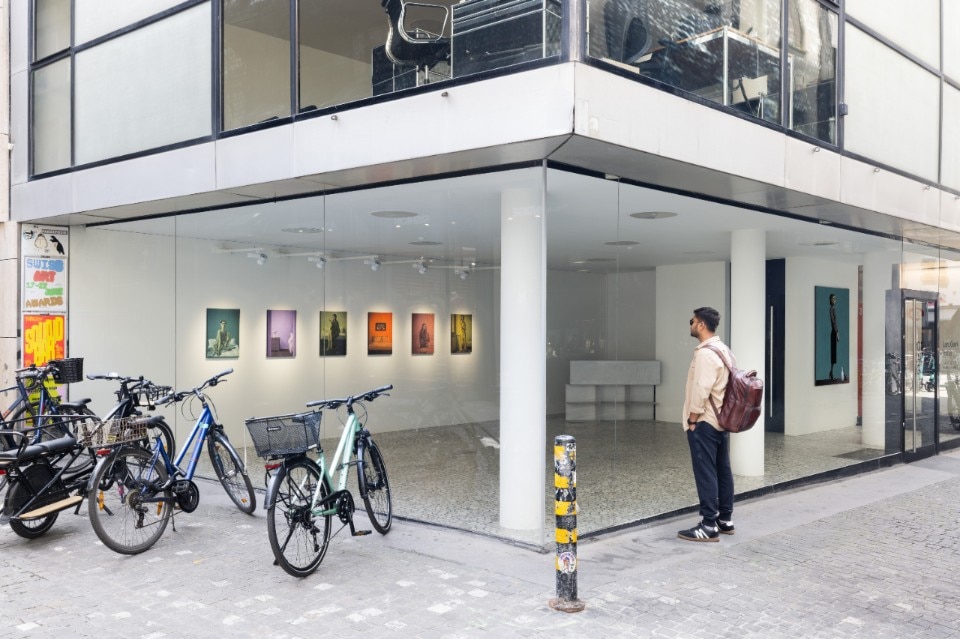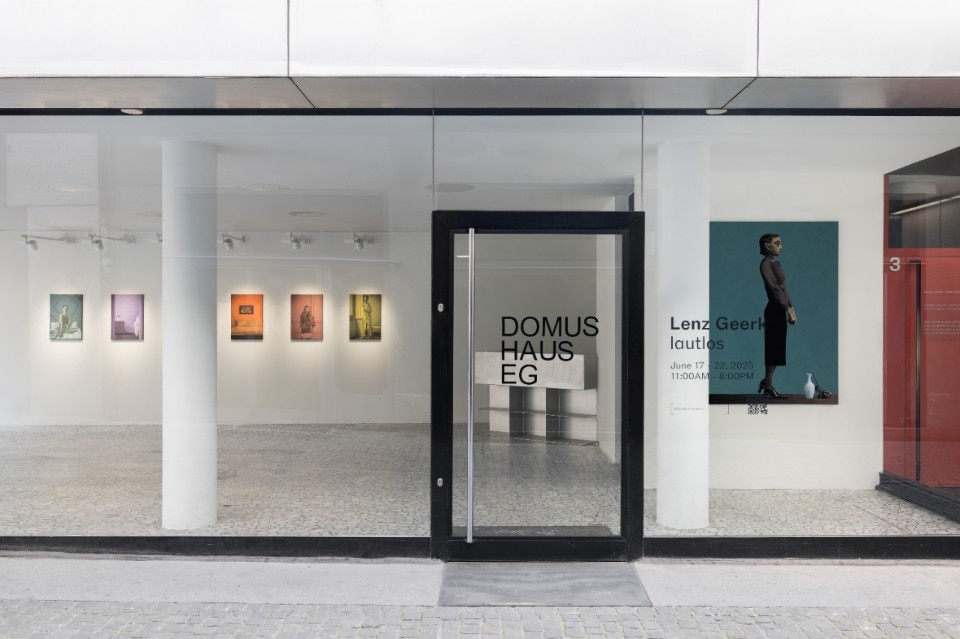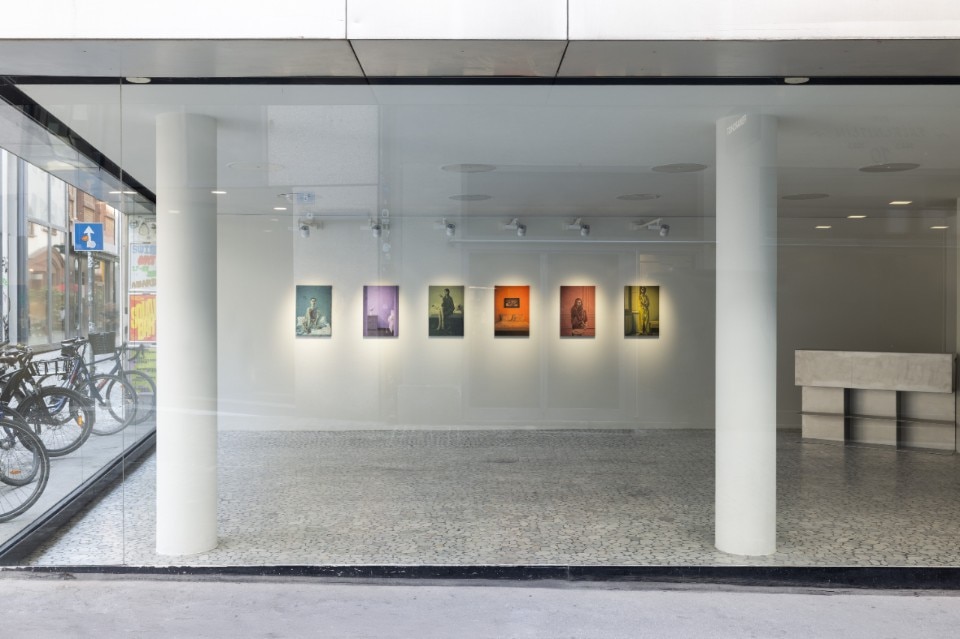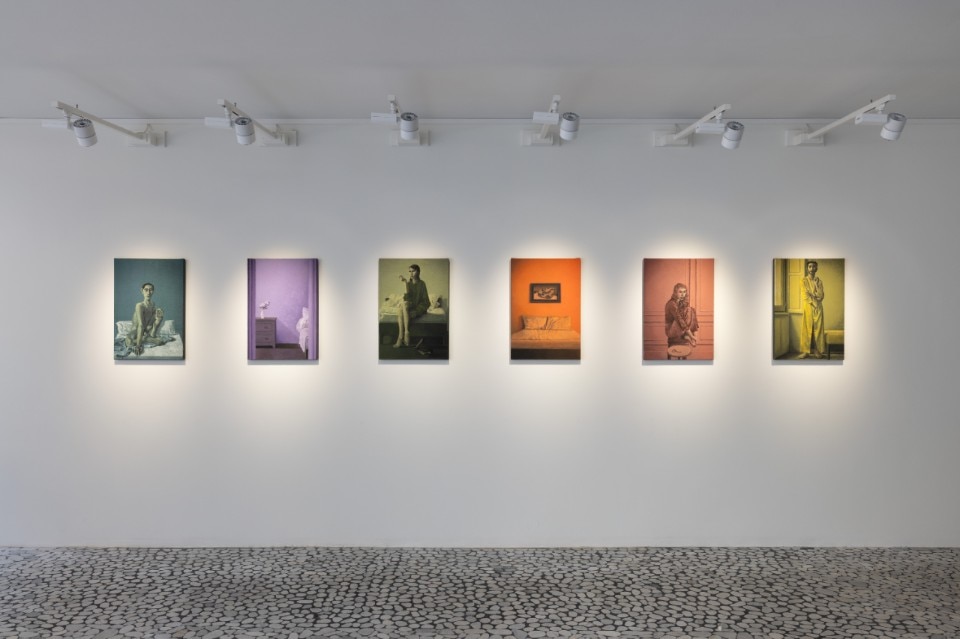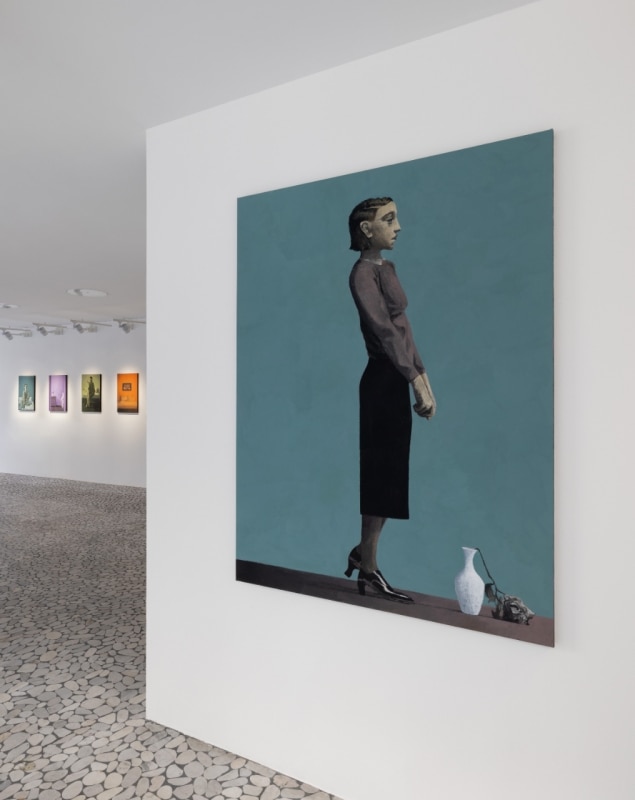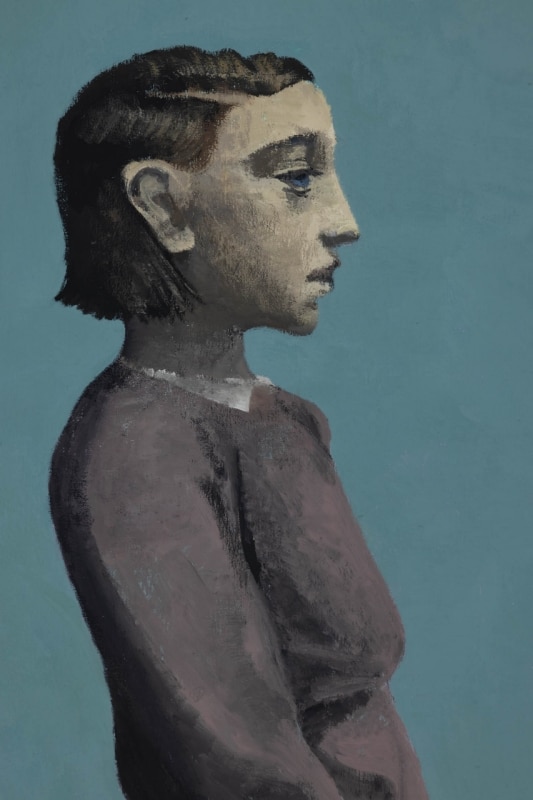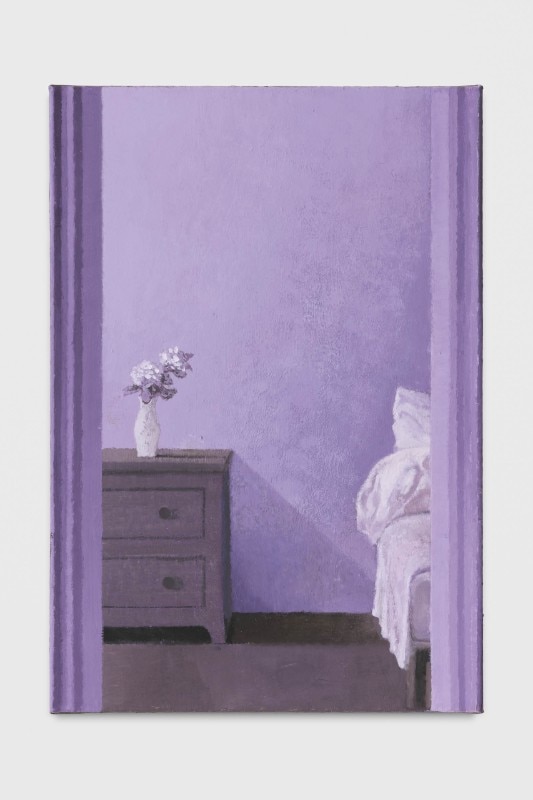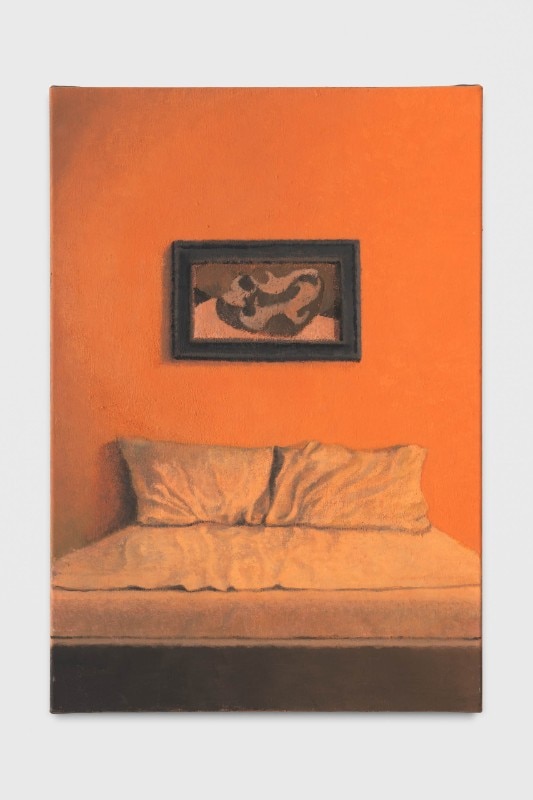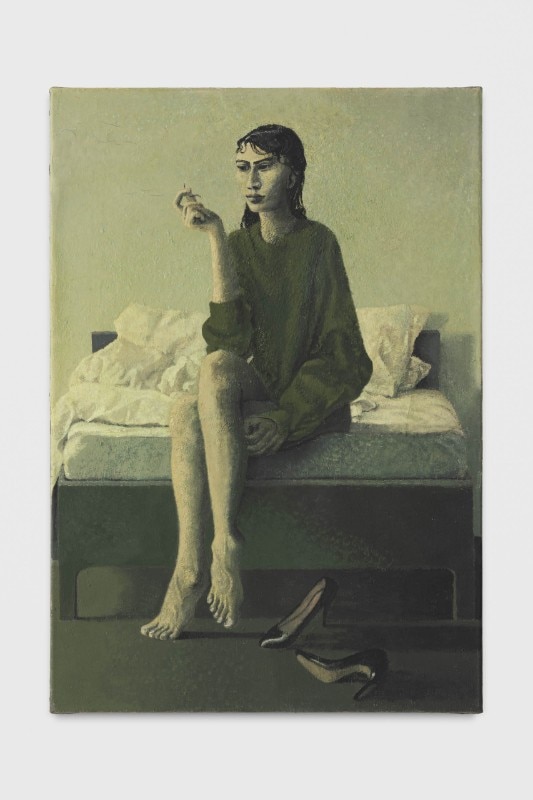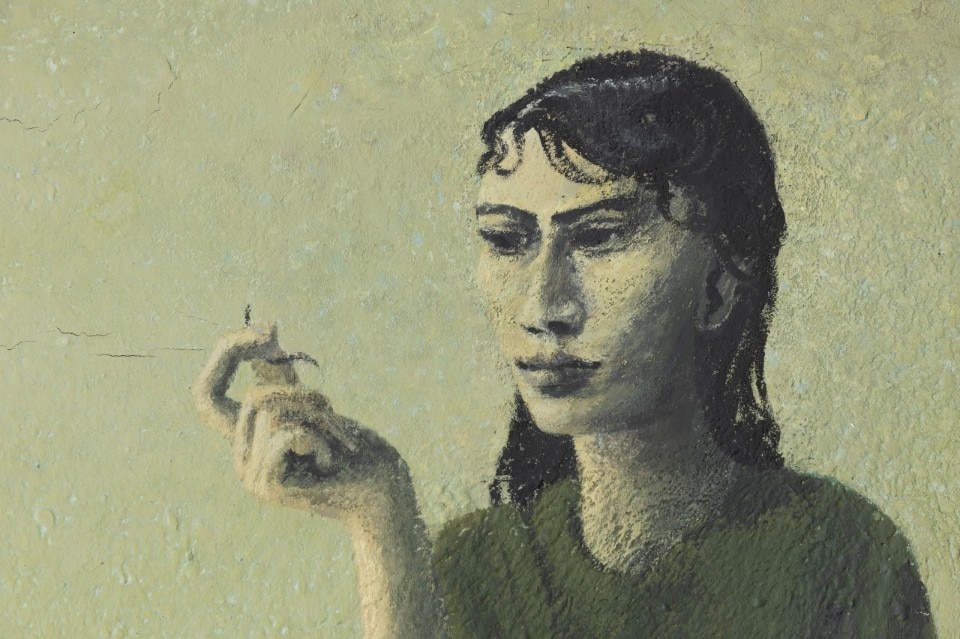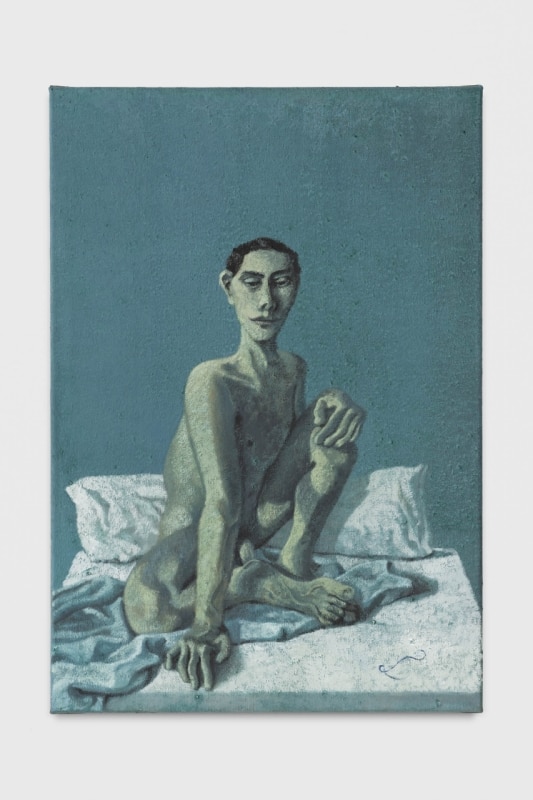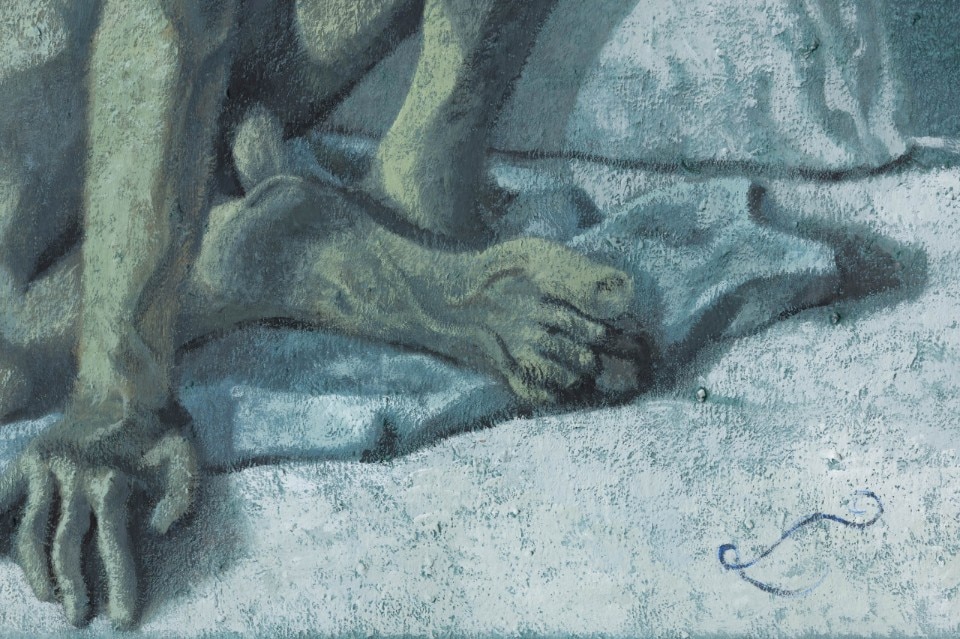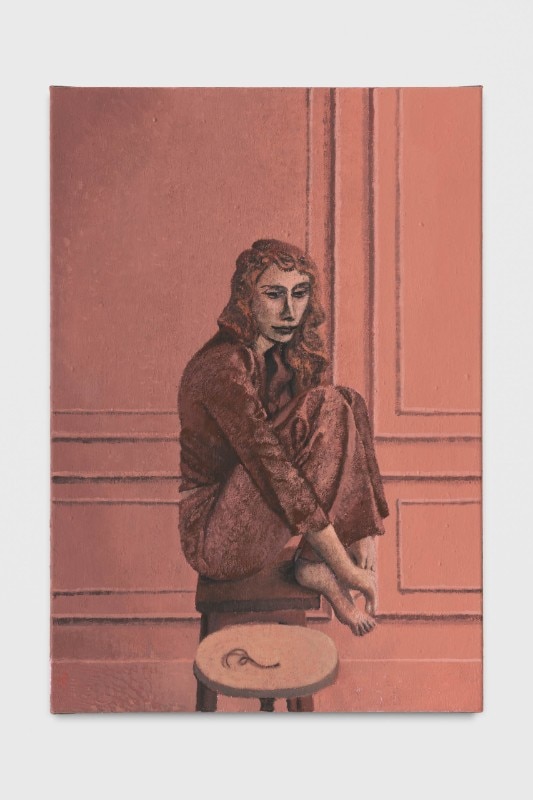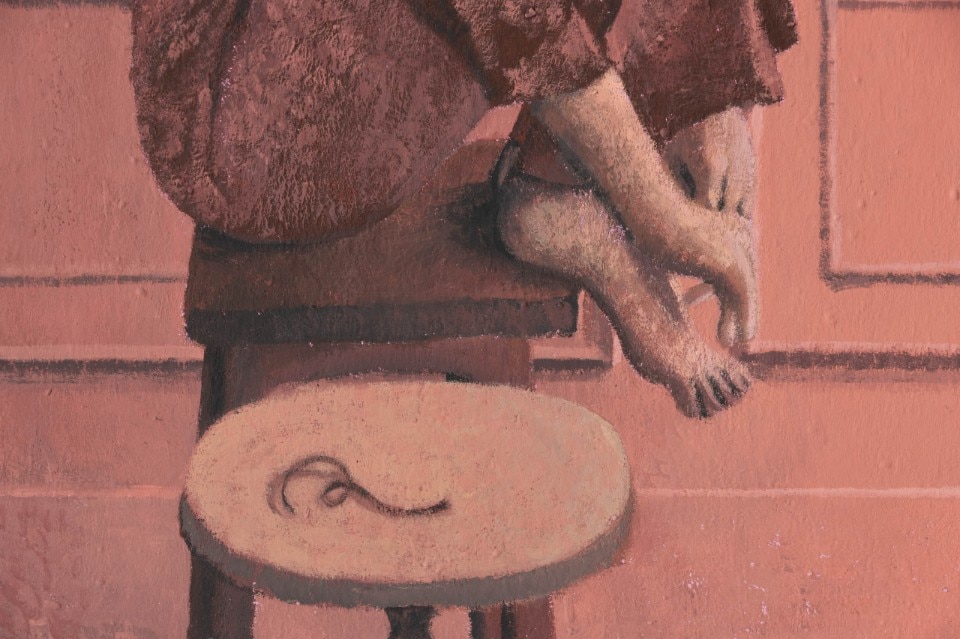In the heart of Basel’s historic center, the Domushaus stands as a rare example of Swiss modernism: a glass and concrete cube designed in 1958 by Max Rasser and Tibère Vadi, combining rational rigor with structural transparency. On the occasion of Art Basel 2025, the building becomes a space of suspension and contemplation — a meditative pause during the most frenetic week of the year.
Here, among continuous façades, regular pillars, and diffused light, Lenz Geerk’s tonal painting finds a natural counterpart. Essential geometries and silent atmospheres mirror one another, giving shape to “Lautlos”, his first solo exhibition in Basel — on view until June 22 — which presents a new series of works in dialogue with previous ones.
We spoke directly with the artist, who shared:
“It feels strange to be back. I left Basel when I was 13, so it’s not the place in which I was a teenager and more the place of my childhood. Basel is very peaceful, very neat and pretty, but my childhood wasn’t exactly easy, so the beauty of the city meets some rather dark memories, which makes it a ambiguous experience.”
But interestingly, it’s always the ambiguity that is essential in my work
Lenz Geerk
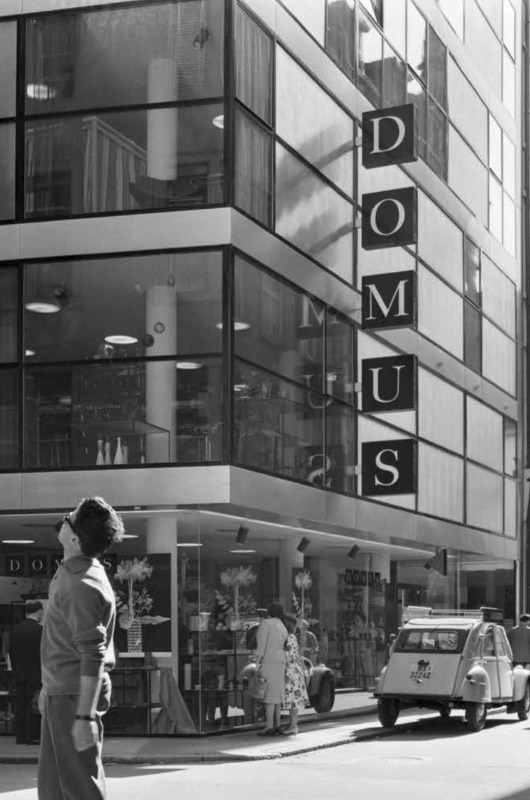
Born in Basel in 1988 and now based in Düsseldorf, Lenz Geerk explores through painting the dimension of solitude — understood not so much as a state of isolation, but as an introspective pause.
"I spent most of last year working on a show which was completely black and white, mostly on paper, it opened in January in Los Angeles," he says. "It’s always important to me to explore different approaches and set myself some new challenges. After experimenting with the many shades of grey I wanted to try to work with the shades of blue, red, orange, etc."
Displayed in the bright rooms of the Domushaus, six new small canvases mark a shift from his previous work, characterized by sharp monochromes. Wrapped in pastel tones or colors so saturated they verge on electric, these painted atmospheres seem to evoke psychic states more than natural lighting conditions. As the artist himself notes:
"It’s interesting to me how it changes the atmosphere of a work when very subtle changes of tone are happening."
The exhibition title, “Lautlos” — the German word for “soundless” — is simple yet evocative, amplifying and defining the suspended atmosphere that permeates the show and guides its reading: domestic scenes stripped of narrative, static interiors, solitary human figures animated by minimal gestures, inert objects.
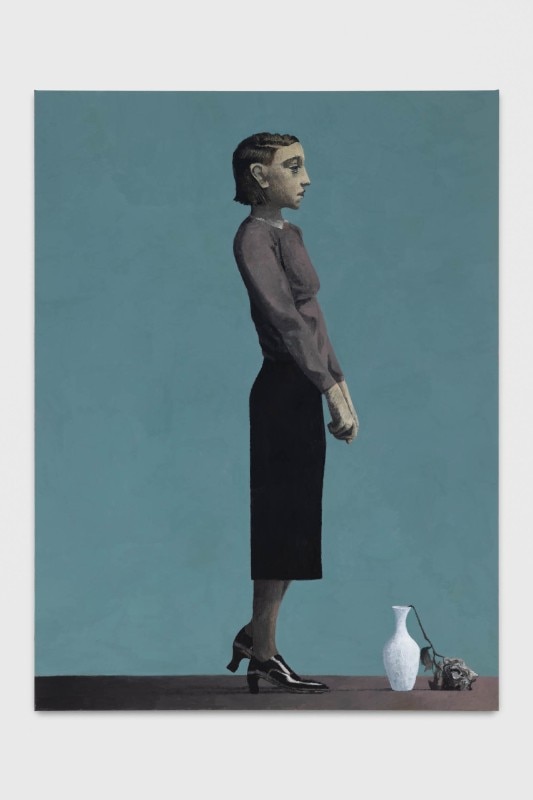
A project that seems tailor-made for the Domushaus’s glass cube — and yet, Geerk explains:
"I didn’t know where the work would be displayed when I started working on it. But interestingly, it’s always the ambiguity that is essential in my work."
An aspect that resurfaces in the series A Lover’s Hair, where the focus is not on the figure, as one might think at first glance, but on one of its smallest fragments: a single hair. Left on a mattress, resting on a stool, balanced between two fingers. So light and fragile it seems ready to vanish with a breath — it becomes a trace of absence, a sign of passage, of a broken bond.
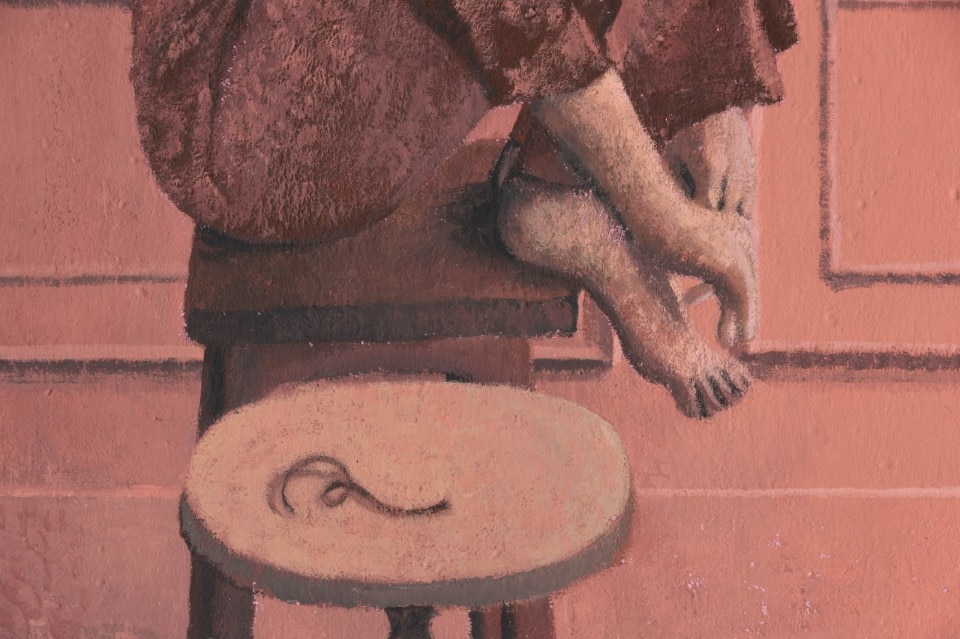
The relationship with the architecture of the Domushaus is central. Located at the corner of Pfluggässlein and Weisse Gasse, in the heart of Basel’s historic center, the Domushaus stands out among the city’s picturesque medieval houses with its sharp modernist form: a six-story cube designed in 1958–59 by architects Max Rasser and Tibère Vadi to house the Domus furniture store, specialized in Scandinavian design. A true “urban showcase” embedded within the old town’s narrow alleys, it is defined by cylindrical pillars, a modular curtain wall façade, and broad ribbon windows that echo the spirit of Neues Bauen and the structural principles of Le Corbusier’s Domino system.
In 1984, to prevent its demolition, the building was converted into the first home of the Schweizerisches Architekturmuseum (SAM): a minimal intervention by the architecture firm Diener & Diener that preserved the original structure while introducing movable walls to adapt the space for temporary exhibitions. Although the museum’s permanent collection was moved to the Kunsthalle in 2004, the Domushaus remains a vibrant hub: today it hosts architecture studios, an active curatorial community, and new public initiatives led by Domushaus EG.
The contrast between its clear geometries and the surrounding historic architecture makes the Domushaus a discreet yet powerful landmark. An ideal setting for “Lautlos”, an exhibition in which Geerk’s silent and introspective painting resonates with the space, making the delicate balance between form, light, and silence tangibly present.

Presenting the project during Art Basel is a deliberately countercurrent choice, signed by Galleria Massimo De Carlo. Amid immersive installations, monumental works, and accelerated rhythms, Geerk’s exhibition offers the exact opposite: quiet surfaces, enclosed volumes, emotional tensions that are minimal yet persistent. Set in a historic building in the city — a symbol of the union between art and architecture — the show stands out as a space of discontinuity: it doesn’t shout, distract, or compete. It doesn’t ask to be seen, but to be listened to more closely; to be read between the lines, to carve out the time needed to pay attention — even when the background noise becomes deafening.


